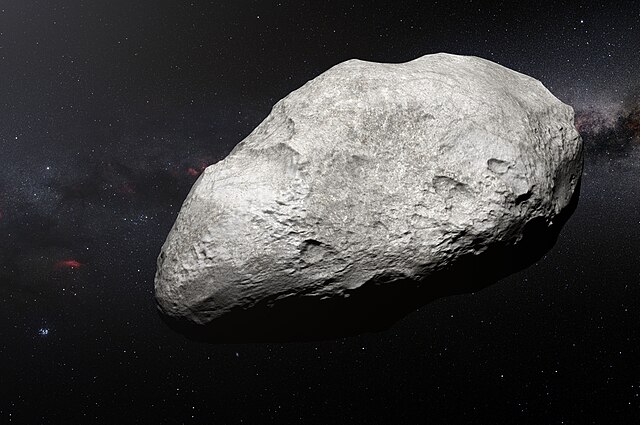(120216) 2004 EW95 (provisional designation 2004 EW95) is a resonant trans-Neptunian object in the Kuiper belt located in the outermost regions of the Solar System. It measures approximately 291 kilometers in diameter. It has more carbon than typical of KBOs, and the first to be confirmed as having this composition in this region of space. It is thought to have originated closer to the Sun, perhaps even in the main asteroid belt.
Artist's impression of plutino and possible former C-type asteroid 2004 EW95
The Kuiper belt is a circumstellar disc in the outer Solar System, extending from the orbit of Neptune at 30 astronomical units (AU) to approximately 50 AU from the Sun. It is similar to the asteroid belt, but is far larger—20 times as wide and 20–200 times as massive. Like the asteroid belt, it consists mainly of small bodies or remnants from when the Solar System formed. While many asteroids are composed primarily of rock and metal, most Kuiper belt objects are composed largely of frozen volatiles, such as methane, ammonia, and water. The Kuiper belt is home to most of the objects that astronomers generally accept as dwarf planets: Orcus, Pluto, Haumea, Quaoar, and Makemake. Some of the Solar System's moons, such as Neptune's Triton and Saturn's Phoebe, may have originated in the region.
Pluto and Charon
Astronomer Gerard Kuiper, after whom the Kuiper belt is named
In 1980, astronomer Julio Fernandez predicted the existence of a belt. It has been said that because the words "Kuiper" and "comet belt" appeared in the opening sentence of Fernandez's paper, this hypothetical region was referred to as the "Kuiper belt".
The array of telescopes atop Mauna Kea, with which the Kuiper belt was discovered





